Cultural Assimilation and the Chow Mein Sandwich
I recently watched the very good documentary The Search for General Tso, nominally about the origins of that popular Chinese-American dish (and where it turns out to have been created comes as a bit of a surprise–though even if you’re already familiar with the dish’s origins, the movie is still worth watching) but also in large part a history of Chinese-American culture, from its origins in the ’49 California gold rush, through its spread and diffusion after the 1882 Chinese Exclusion Act, past the post-WWII communist scare and into the current ubiquity of the Chinese restaurant in America.
The documentary spends a good part of its running time talking about how Chinese restaurateurs have come to adapt the techniques of Chinese cuisine to use local flavors, with chop suey in the early 20th century and of course General Tso’s chicken over the past 40 years serving as prime examples. Other common Chinese-American menu items are mentioned–crab rangoon, Springfield-style cashew chicken, fortune cookies. Chow mein (especially the crispy East coast “Hong Kong style” chow mein) though not directly covered in the film, could have been another.
In the late 30s, after a decade spent cooking in his uncle’s Chinese restaurant, a Chinese immigrant named Frederick Wong started the Oriental Chow Mein Company in Fall River, Massachusetts. (Fall River’s other claims to fame include being the home to famous chef Emeril Lagasse and famous axe murderer Lizzie Borden). The company got its start making crispy fried chow mein noodles to sell to area restaurants, saving them the labor of making and frying the noodles themselves. By the late 40s, they started packaging their noodles and sauce mixes for the home cook as well.
How did the folks in that little corner of Massachusetts–and it does seem to be a hyper-local phenomenon, hardly known at all outside of a couple towns in southeastern Massachusetts and nearby Rhode Island, though for some reason they were at one time also served at Nathan’s Famous in Coney Island–get started piling noodles and gravy into a hamburger bun and selling it as a sandwich though? I can’t say for sure, but it seems to be a combination of the Chinese American ability to adapt local tastes, the development of a local preference for crispy chow mein, and the common practice during the Great Depression of slapping just about anything between 2 slices of cheap bread and calling it a meal. At least the last part is corroborated by formal research into the chow mein sandwich as well:
The rationale for serving the chow mein sandwich today and in the past was most likely the same–an item that many people could afford. As noted by the maker of the chow mein noodles, “for low cost, you could get a meal that would fill.”
The chow mein sandwich seems to have been a local favorite well before Frederick Wong opened his factory–a common meal in the 30s, according to one of the authors of the quoted paper, was a chow mein sandwich with French fries and an orange soda.
As for why other Chinese dishes didn’t get the sandwich treatment–well, St. Louis has the St. Paul, an egg foo yung sandwich, and Salem Massachusetts might be famous for its chop suey sandwich if it wasn’t for, y’know, that other thing they’re famous for. While discussing the General Tso documentary and these sandwiches with a friend, we both wondered why General Tso’s hadn’t gotten the sandwich treatment. Turns out it has, and maybe will again, in the form of General Tso’boy, a pop-up flea market stand doing Chinese-themed sandwiches that may or may not rise again. Not to mention a chain of gas station convenience stores in Indiana and Ohio that served this guy, as pointed out by another friend.
Regardless, I had to give it a shot myself. I got a baguette from d’Amato’s and an order of General Tso’s from my favorite local carry-out Chinese joint and whipped one up. The result was basically like eating some good General Tso’s chicken and some very good bread at the same time but never really gelled into the greater-than-the-sum-of-its-parts whole you want from a good sandwich. I think the potential for a good sandwich is there; I just didn’t quite make one. I’d like to give it a shot sometime with a different dish, one I might like better, that’s not so dependent on crisp textures–Mongolian Beef, maybe, or Mapo Tofu–but as dumb stunts go it was still pretty tasty.
So what about crispy chow mein noodles and gravy on a hamburger bun makes it a better sandwich than better Chinese food on better bread? Rather than try to recreate it myself from scratch, I thought I’d go to the source, or at least have the source come to me. Oriental Chow Mein Company had a fire in 2009, resulting in a regional shortage of crispy chow mein noodles, but they quickly rebuilt and are back at it. Though they don’t have a website themselves, I was able to order boxes of their Hoo-Mee brand chow mein noodles & gravy kit, not too unreasonably priced, from a third-party website called FamousFoods.com.
The chow mein came packaged in bright yellow cardboard boxes with a design that I imagine can’t be too far off of what they used when they originally started selling to the home cook in the 1940s.
Inside the box are a large bag of fried noodles, and a small packet of powdered gravy mix. The recommended sauce prep is to mix the sauce mix into a half cup of warm water; add about a cup of chopped onions, a cup of chopped celery, and a small amount of bean sprouts to 3 cups of boiling soup stock, broth, or water; then mix the sauce mix into the boiling liquid to thicken. The box doesn’t mention using any cooking fat, but the sauce mix packet does. I imagine this is because the sauce mix packet, being in direct contact with the sauce mix, understands that it’s mostly just corn starch.
I honestly don’t think that powder would give the gravy much flavor without a lot of help, so I used chicken stock and all the recommended vegetables.
I sweated the onions and celery with a little butter for 5 or 10 minutes, then added in the chicken stock and simmered for about another 5 or 10 minutes before adding in the sauce mix.
Though I know that cheap hamburger buns are the norm, the store I went to happened to have some brioche buns that day, which I thought might stand up better to being doused in gravy.
So I piled on some noodles
and ladled a mess of vegetable gravy over the whole thing
If it looks like a bit of a sloppy mess, that’s because it is. Even with the top bun in place.
You can see that the gravy has already soaked well into the bottom bun. By the time I was done photographing this sandwich, any crispness that remained in the noodles had given in to the gravy as well. Eating this sandwich required patience and a ready supply of napkins, with a few side trips into fork territory.
How did it taste though?
It was mild. The gravy had a mild flavor, the overall aroma was of bean sprouts and celery, the vegetables were soft, the noodles were quickly becoming soft, the bread was even more quickly becoming soft. There were no real Chinese seasonings involved that I could detect, just starch on starch swimming in mild starchy gravy. It was unchallenging. Comforting.
It was really really good.
I’m not much for the starch-on-starch thing in general, but this really worked. Maybe it has a lot to do with way the gravy keeps things moving, or the way the vegetables change up the texture. In fact, the sandwich can be served like I made it, or it can be served “strained,” where the gravy is poured over the noodles without the vegetables in it. Often this variant is served on sliced white bread, with the strained gravy poured over the top slice of bread, in the manner of a diner-style hot turkey sandwich, though not open-faced.
They can also be served with various meats–chicken, beef, shrimp. Shrimp turns out to be pretty good.
I don’t think it was substantially better than just the plain chow mein sandwich though. It’s such a simple thing, and that’s part of its strength, I think. Even without having grown up eating these, I thought it was A+ comfort food. I can only imagine how much a hefty dose of nostalgia would improve it.

I like sandwiches.
I like a lot of other things too but sandwiches are pretty great



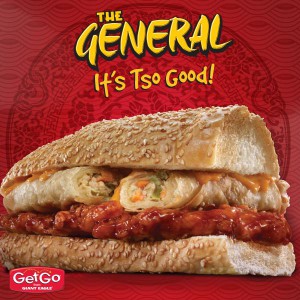
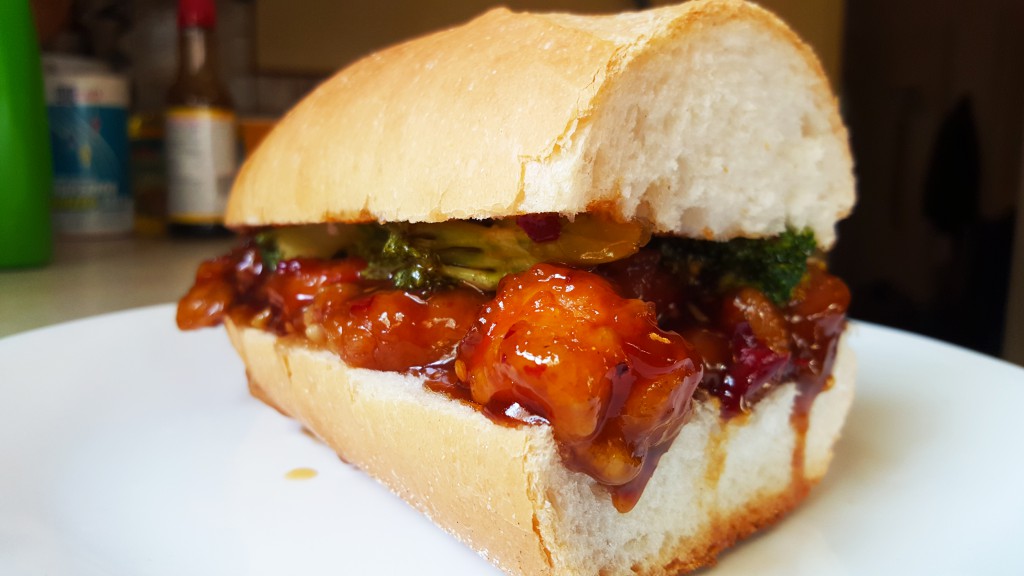
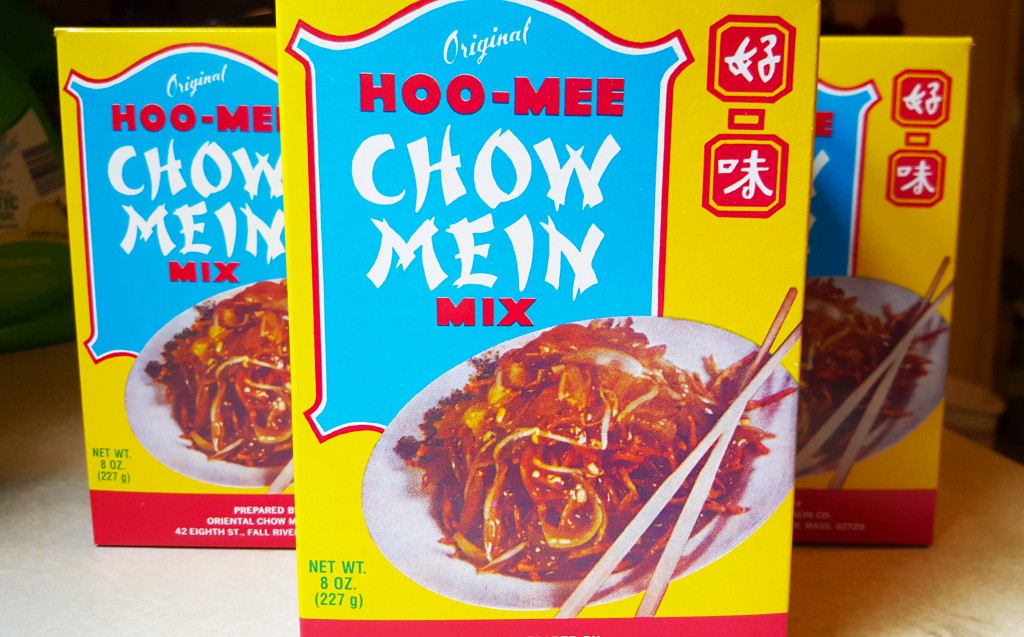
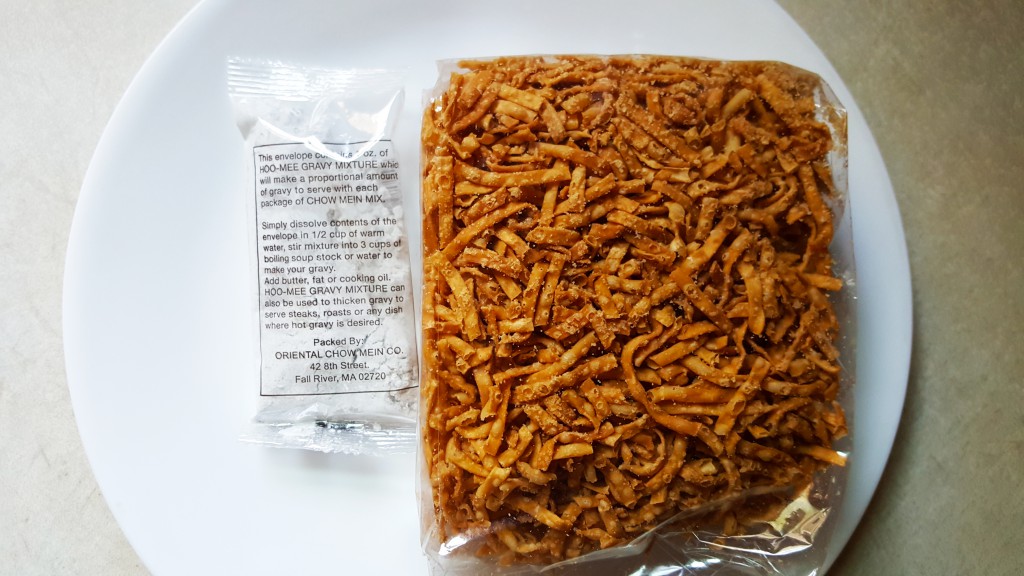
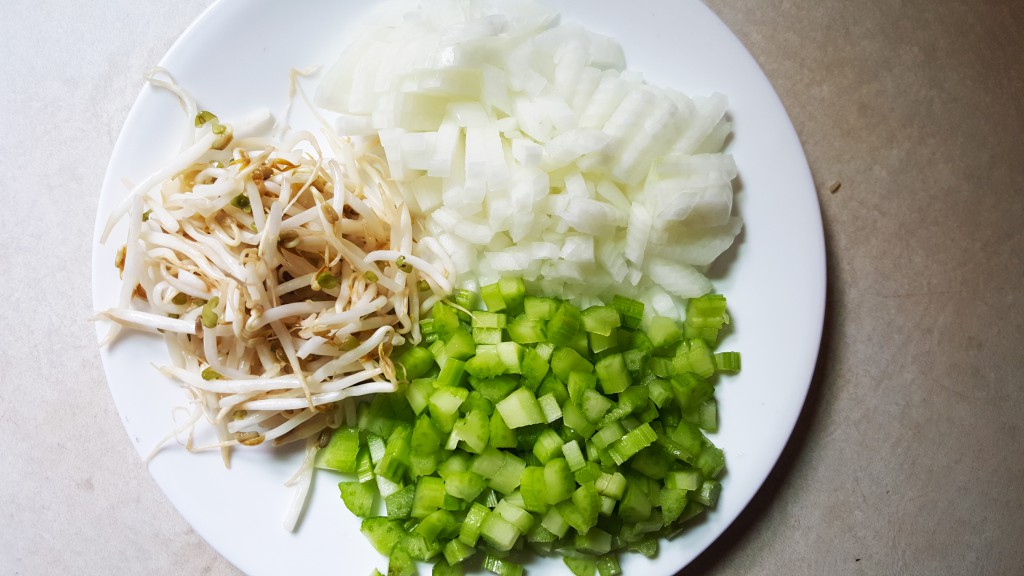
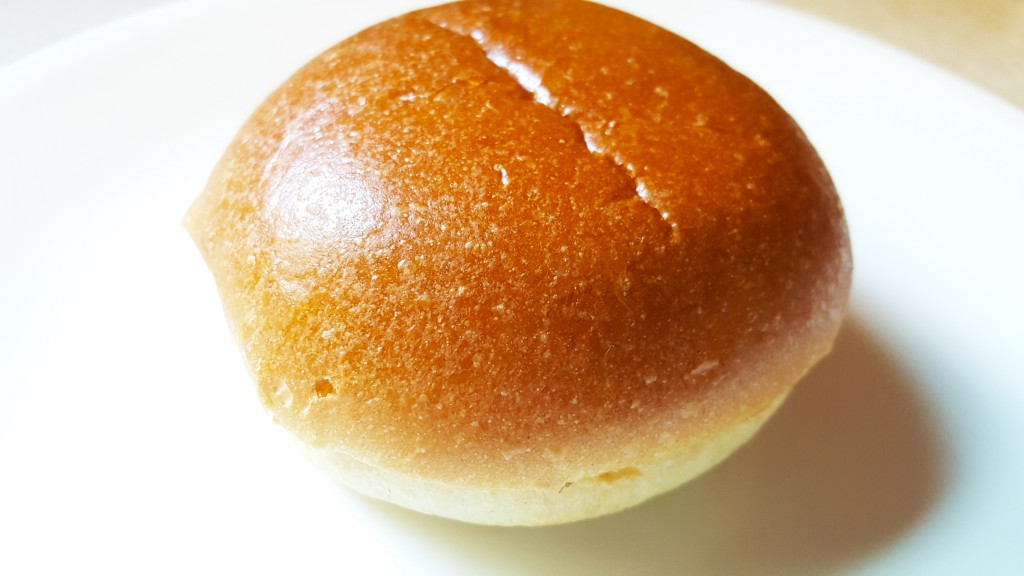
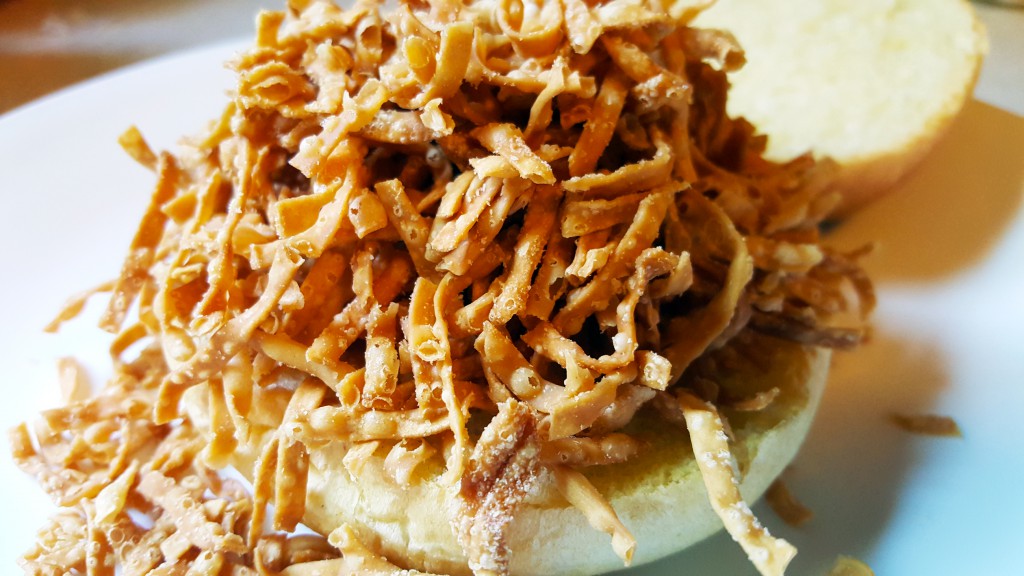
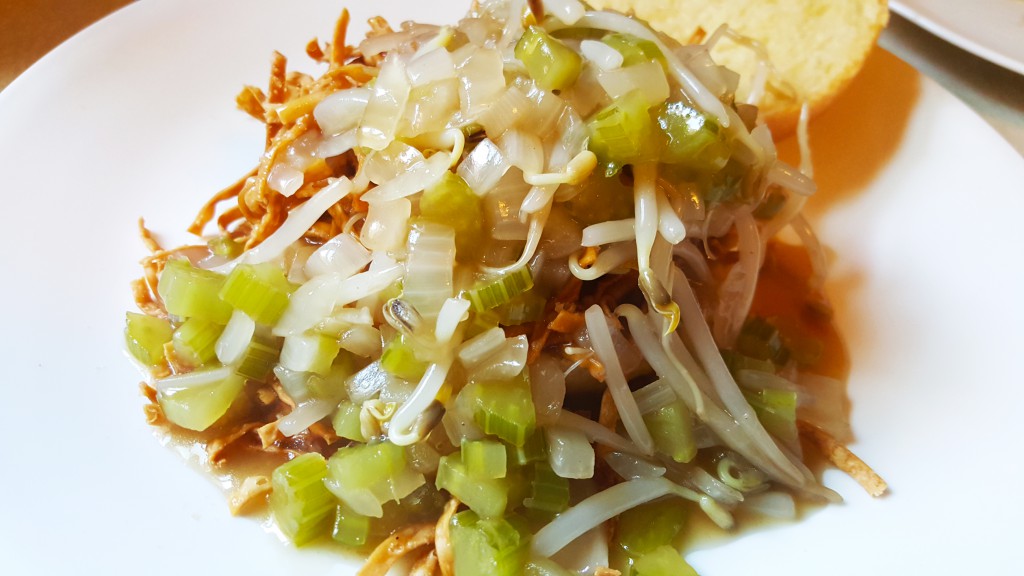
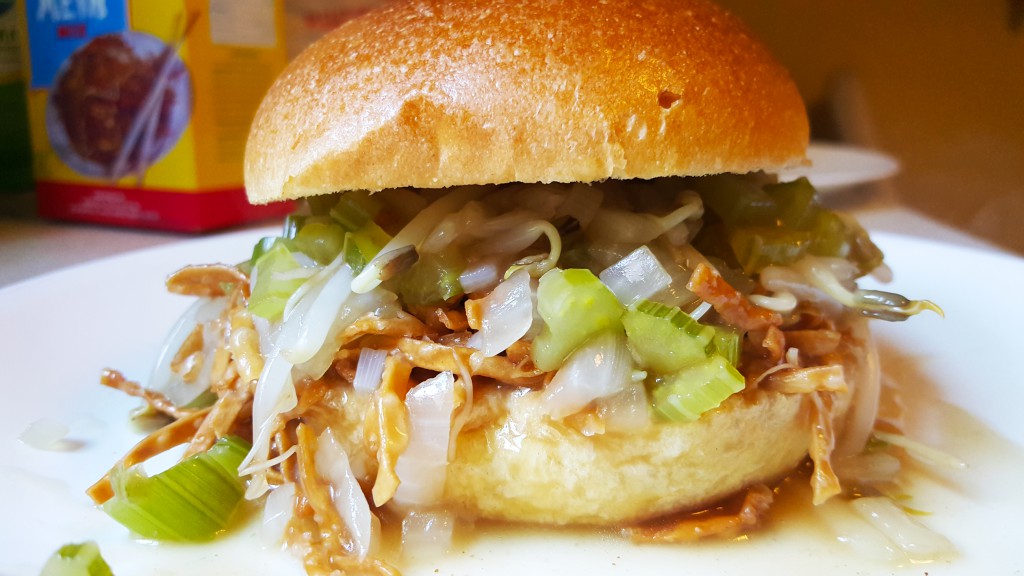
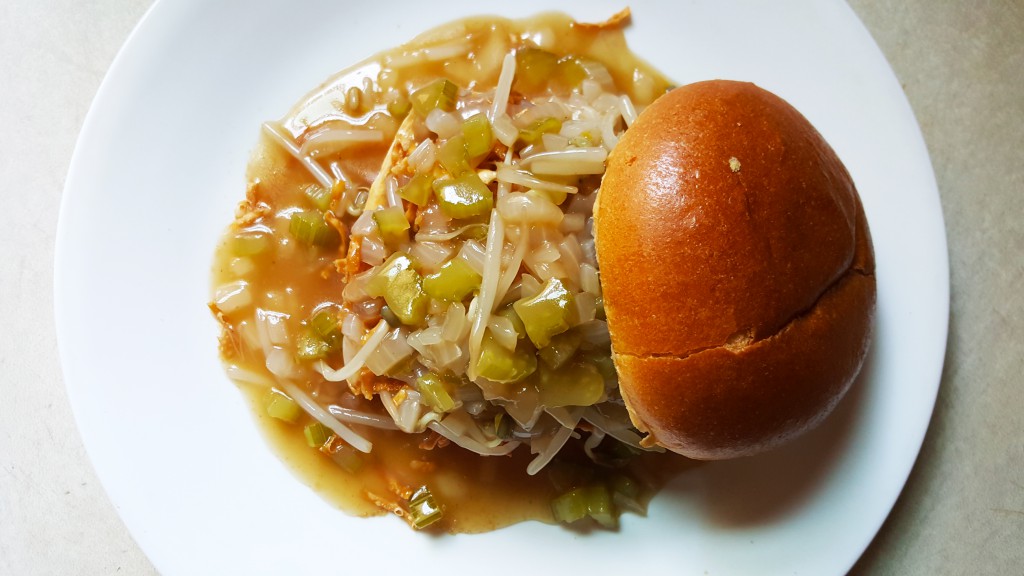
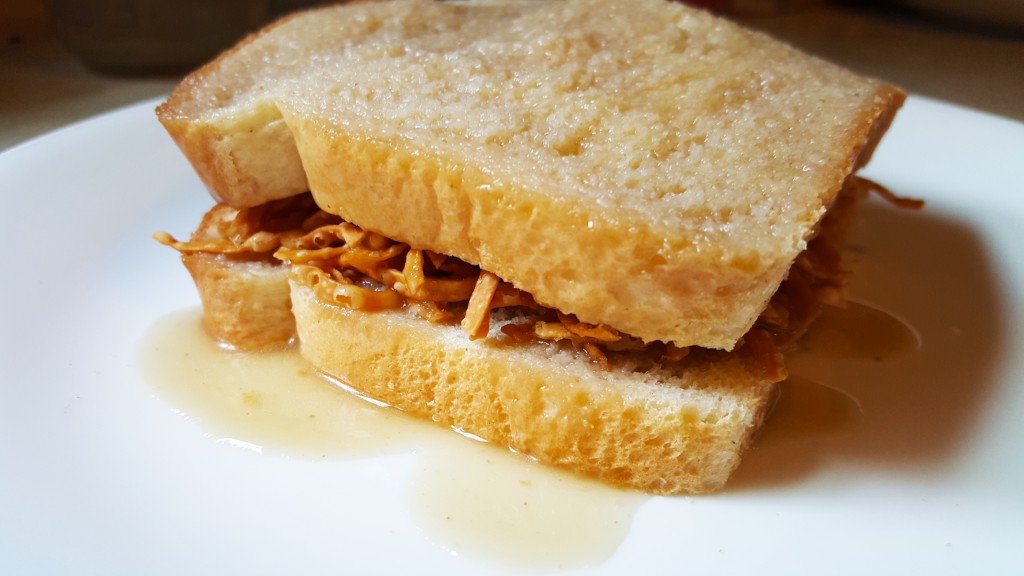
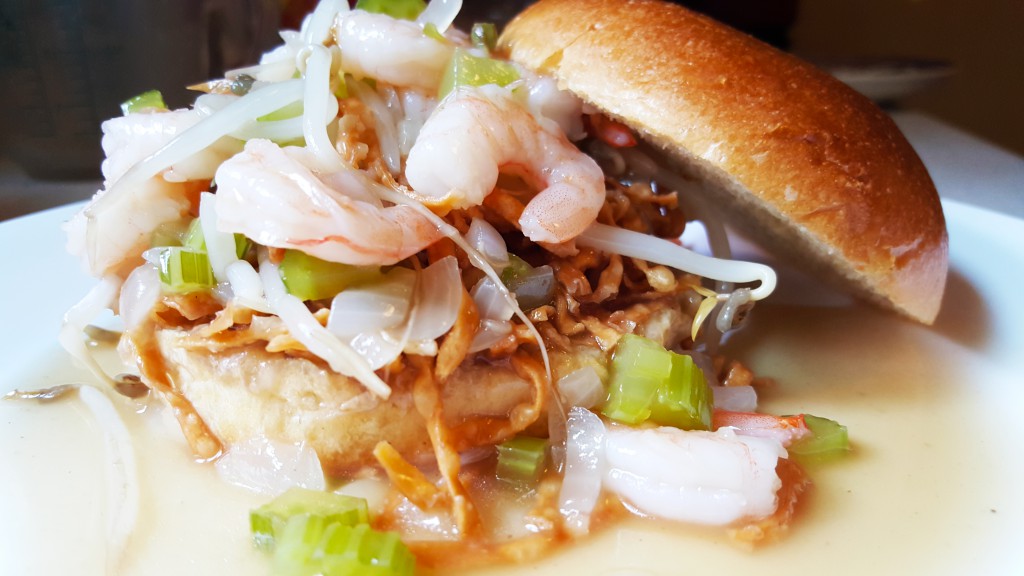
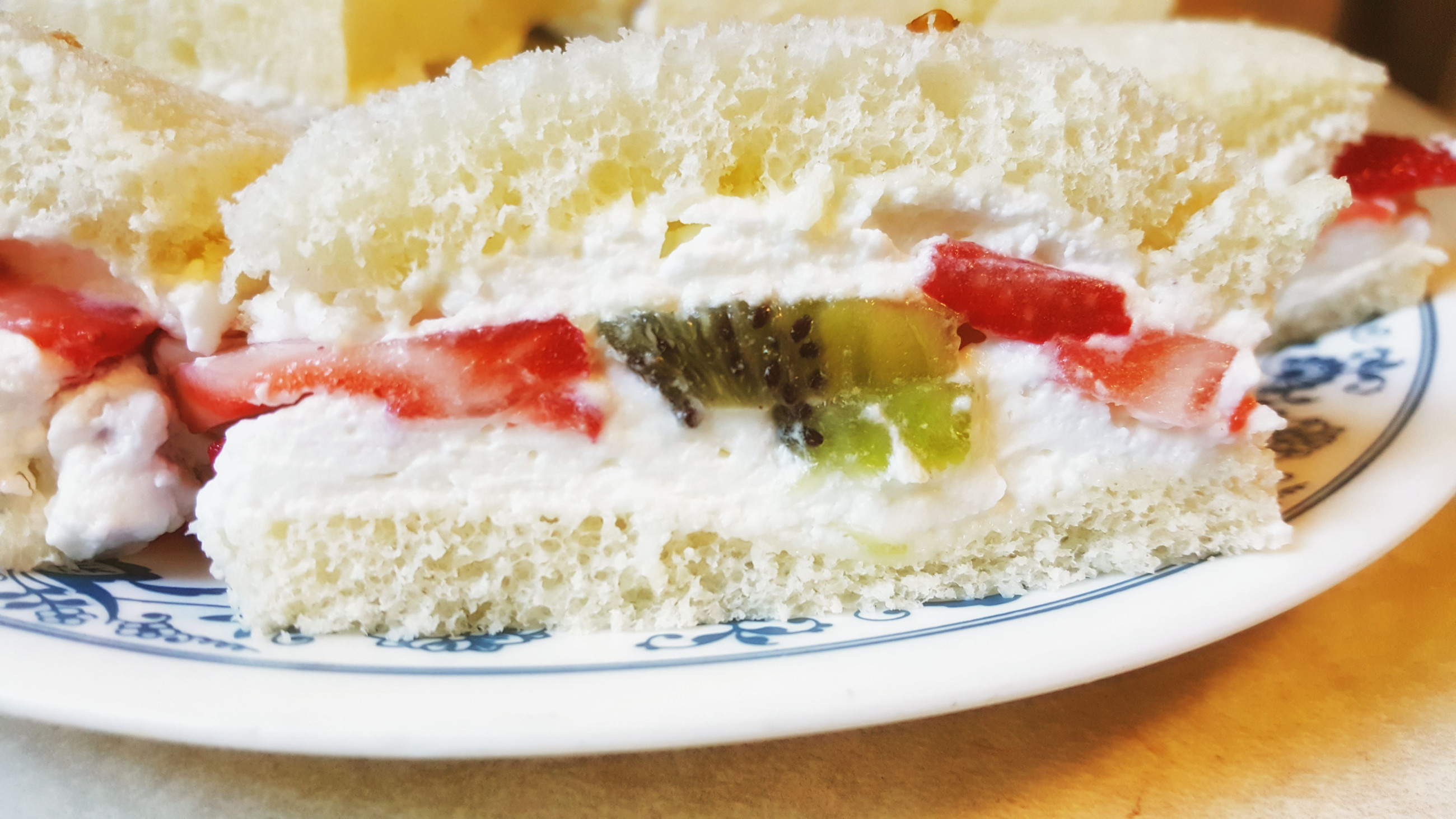

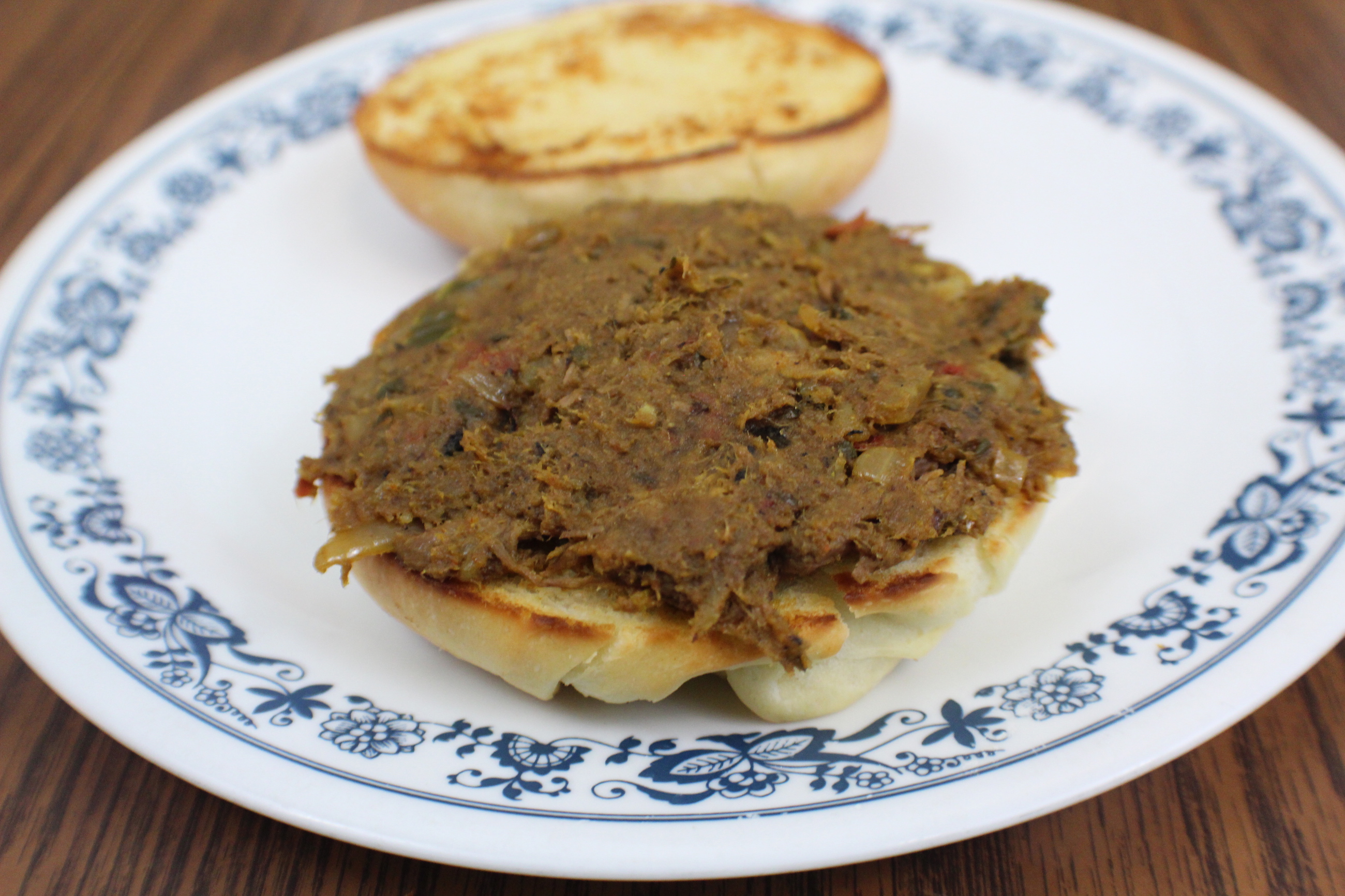






When i was thinking about making (and writing about) this sandwich, I was going to approach it from a similar angle, the Chinese immigration to Aus happened at a similar time, and makes for interesting history blogging… I haven’t managed to research the sandwich enough to make it though, or the history… You are, as always, a legend of the sandwich.
Wonderful article. I grew up on Nathan’s chow mein on a bun (25 cents back then), and one of my favorite documentaries is “the search for general Tso” on par with “The Deli Man”
Thanks
Jonathan
You could offer the recipe. Don’t see it anywhere on this page.